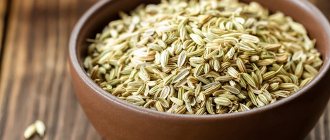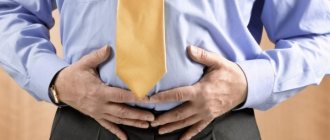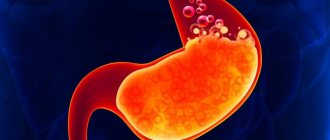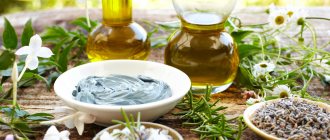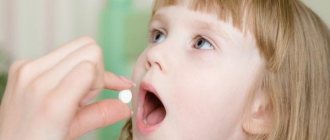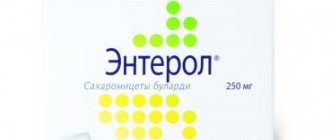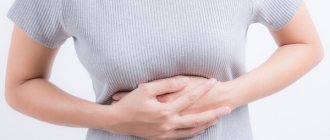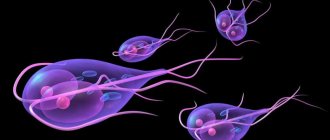Increased gas formation, or flatulence, is a widespread phenomenon, so tablets for flatulence and gas fly off the shelves of pharmacies very quickly. Gases located in the intestinal lumen have the form of foam with a large number of small bubbles containing gas. Normally, the intestines of a healthy person contain up to 20 ml of gases, and 600-1200 ml of gases are released through the rectum per day; in pathological processes, up to 5000 ml of gases can be released through the rectum. The three main sources of intestinal gases include air swallowed with food, gases entering the intestinal lumen from the blood, and gases that are synthesized in the intestines during fermentation, rotting, and as a result of the vital activity of special gas-producing microorganisms as part of the intestinal microflora. Common causes of flatulence include diseases of the gastrointestinal tract, imbalances in the intestinal microflora and the relationship between gas-producing and gas-consuming microorganisms, disturbances in intestinal motility, and stress. Often, flatulence is the result of an unbalanced diet with a large amount of coarse fiber, legumes, raw vegetables and fruits, and foods that are characterized by fermentation and fermentation (for example, kvass or sauerkraut). This “style” of eating is typical for residents of large cities.
Treatment of intestinal flatulence: principles and groups of drugs
The basic principle of treating bloating is to identify and eliminate the factors that lead to increased gas formation. The best remedies for flatulence and bloating can be selected only after identifying the causes that led to the development of the disease, so accurate diagnosis is an important principle in the treatment of the disease. One of the basic principles of treating flatulence is the removal of gases accumulated in the intestinal lumen, restoration of intestinal motor function, restoration of biocenosis (normal intestinal microflora) and treatment of the underlying disease, the manifestation of which may be flatulence. In the treatment of flatulence in adults, drugs of several main groups are used. These are enterosorbents, antifoam drugs (carminatives), products containing digestive enzymes, antispasmodics (remove spasms and reduce pain), prokinetics that improve motor activity of the intestine, and agents that normalize the balance of intestinal microflora.
Other reasons
- Aerophagia. This is another name for swallowing air bubbles when eating. This usually happens if a person’s eating behavior is incorrect. For example, this happens if a person constantly swallows food in large pieces, talks while eating, and so on. Sometimes it’s not about how a person behaves, but about malocclusion, the presence of braces and other deviations of the oral cavity from the norm.
- Dysbacteriosis. When the structure of the colon microflora changes, farting intensifies. Treatment is needed here.
- Digestive enzyme deficiency. If the gastrointestinal tract lacks the necessary enzymes, the food is not processed entirely, and therefore gases begin to be released more intensely.
- Problem with food passage. If intestinal motility is impaired, it does not do its job thoroughly, and therefore food through the gastrointestinal tract can move very slowly. This leads to the fact that all processes involving microorganisms are greatly enhanced, and this leads to the fact that gas formation constantly occurs on an increased scale - and the person begins to “fart”.
Treatment of flatulence: the best drugs and pills for bloating
Enterosorbent drugs against flatulence
The drugs in this group have a narrow range of contraindications and can be used to treat flatulence in both adults and children. However, for flatulence caused by chronic diseases of the digestive tract, enterosorbents have only a temporary alleviating effect. Activated carbon. A natural and universal remedy for flatulence in the intestines, which is used to “collect” (absorb) substances that cause putrefactive processes and fermentation. The remedy works not only for flatulence, but also for digestive disorders and poisoning. Activated carbon is good because it is not absorbed into the blood, acting only in the intestinal lumen. The medicine is released in tablet form. When taking it, it is important to remember that prolonged and uncontrolled use of activated carbon can cause constipation. White coal. A more modern alternative to classic activated carbon, a natural preparation based on microcrystalline cellulose and silicon dioxide. It has a more powerful absorption potential, helps to effectively reduce gas formation and stimulate intestinal motility. This drug for intestinal flatulence is not used during pregnancy. Polysorb. Another effective enterosorbent, which contains silicon dioxide. Available in powder form; use Polysorb in the form of a solution (suspension). It has the ability to absorb excess gases and harmful substances (toxins), providing a cleansing effect. This medicine is prescribed for flatulence and gases due to food poisoning or intestinal infections. Contraindicated in case of intestinal atony and risk of gastrointestinal bleeding.
Antifoam medications against flatulence
Defoamers have a quick effect, “collapsing” the bubbles of gases in the intestines, but require long-term use to ensure a long-lasting effect. Meteospasmil. The drug was created with the addition of simethicone, a substance that reduces gas formation. Somewhat reduces pain sensitivity of the intestines. Espumisan. One of the most common and well-known drugs for flatulence in adults. Available in different forms - in the form of drops, capsules, emulsions and granules. Actively destroys gas bubbles, improving the well-being of a person suffering from excess gas formation. Espumisan is not used for intestinal obstruction; can cause an allergic reaction. Espumisan is allowed during pregnancy.
Antispasmodic drugs against flatulence
Drugs from the group of antispasmodics eliminate spasms of the intestinal muscles and relieve pain, which is often accompanied by the accumulation of gases in the intestines and stretching of the intestinal wall. The most commonly used medications for flatulence and bloating are No-shpa (Drotaverine), Papaverine, and a more modern remedy - Neobutin.
Prokinetic drugs against flatulence
Prokinetics help improve the motor activity of the gastrointestinal tract, speed up the passage of food through the intestinal lumen, and by reducing the time food spends in the intestines, reduce the intensity of fermentation and putrefaction processes, which are accompanied by the release of gases. Domperidone, Passengerx, Motilium. These medications are often used in the treatment regimen for flatulence. They help improve the digestibility of food, reducing the amount of gases accumulating in the intestinal lumen. In addition to flatulence, these drugs are prescribed for belching, heartburn, nausea and functional disorders of the gastrointestinal tract.
Enzyme preparations against flatulence
Enzymes help normalize digestive functions, improve the general condition of a person with various manifestations of diseases of the digestive system, including bloating and increased gas formation. Mezim forte. Helps to more quickly break down and absorb proteins, fats, carbohydrates, and starch in the large intestine. Eases the feeling of heaviness during occasional overeating, flatulence, helps with diarrhea, diseases of the stomach and pancreas. It is not used in cases where a person has acute pancreatitis or has worsened chronic pancreatitis.
Prevention
If there is a predisposition to bloating of the abdominal cavity due to the characteristics of the breed, physique, if similar troubles have happened before, it is always necessary to have the appropriate medications on hand. To prevent disease, make up a diet of easily digestible protein foods. Divide the food into small pieces so that the dog does not swallow air when feeding. Divide the daily portion into portions and feed your dog 3 times a day. Monitor the speed of food absorption and do not allow it to be swallowed quickly: maze bowls are suitable for this purpose. Water should not be offered after games. In addition, follow the simplest safety rules.
- Give anti-worm medications regularly: at least once every 3 months;
- Do not give your pet human food. All carbohydrate products with dyes, soda, yeast and preservatives are taboo.
- Do not feed scraps from the master's table.
- Feeding should be done at least 1 hour before and after the walk. Exercising on a full stomach is bad for your health.
- Make sure that your pet does not eat or pick anything up from the street: teach him to eat only at home.
- If you vomit with foam, contact your veterinarian immediately and do not self-medicate.
- Feed only fresh and high quality food.
- Give water an hour before and after feeding. Otherwise, the gastric juice is diluted and does not contribute to the digestion of food.
- It is better to switch to a new diet gradually.
- Do not feed boiled bones, especially tubular ones. They can injure the esophagus and stomach.
- Get checked regularly by a veterinarian to prevent urolithiasis, nephritis, kidney and heart diseases.
Dogs, like people, are susceptible to digestive system disorders. If a dog’s bloating is barely noticeable and goes away quickly after taking medications, it will be enough for the owner to reconsider his attitude to the animal’s diet and regimen. If the bloating does not stop and your four-legged friend is getting worse every hour, you should urgently seek veterinary help. Remember, the dog's health is in the hands of its owner.
Related:
- My dog's stomach is rumbling - what should I do?
- Red spots on a dog's belly
Drugs that normalize intestinal microflora against flatulence
When choosing how to treat intestinal flatulence, doctors use drugs to restore the balance of normal microflora. The amount of gases formed in the intestines largely depends on the state of the intestinal microflora. Linux. The drug contains three types of lactic acid bacteria. It has a pronounced “fixing” effect, eliminating diarrhea. Approved for use at any age, however, to achieve a long-term effect of normalizing the microflora, a long course of treatment is required. Contraindications for the use of Linex include individual intolerance to fermented milk products; When taking the drug, skin rashes and itching are possible. Lactofiltrum. A combined preparation containing a natural sorbent lignin and a prebiotic (lactulose), which creates conditions for the growth of beneficial intestinal microflora. Improves intestinal motility, actively binds and helps remove toxins and harmful substances from the intestinal lumen, including those that cause increased gas formation. Available in tablet form. Maxilak
. A modern synbiotic drug that is designed to restore and maintain the balance of intestinal microflora in adults and children over 3 years of age. The product contains 9 different types of beneficial bacteria (bifidobacteria, lactobacilli), which normally form the basis of intestinal microflora, and indigestible carbohydrates (prebiotics), which are not broken down in the intestines and provide a nutrient medium for the growth of beneficial microflora. Provides normalization of intestinal microflora and processes occurring in the gastrointestinal tract, including gas formation. It can even be used in people with lactase deficiency (individual intolerance to dairy products).
Characteristic symptoms
Increased gas formation in the stomach may be indicated by the development of some symptoms accompanying this disease. These include:
- release of gases from the body through the mouth (frequent belching);
- attacks of nausea;
Nausea attack
- the patient's stomach becomes very hard, begins to swell and hurt;
- as a result of mixing of gases with the contents of the stomach, rumbling in the stomach occurs;
- gases coming out of the stomach have an unpleasant odor;
- there are problems with stool (diarrhea or constipation);
- general weakness of the body, problems with sleep;
- depression due to constant feelings of embarrassment;
- burning sensation in the sternum area resulting from compression of the vagus nerve.
The main symptom is an increase in waist size
Nutrition for flatulence
Diet is an important auxiliary element of therapy in identifying flatulence. For people suffering from flatulence, it is important not only to take tablets for flatulence and gas, but also to reconsider their usual diet. It is important to exclude gas-forming products - grapes, sorrel, gooseberries, cabbage, legumes, carbonated drinks, alcohol, and reduce the frequency of consumption of fatty, fried and high-calorie foods. The content of fermented milk products (if there is no intolerance), crumbly cereals, steamed or boiled vegetables, lean meats, poultry and fish should be increased in the diet. If there is no effect, you must consult your doctor.
Share link:
23034
